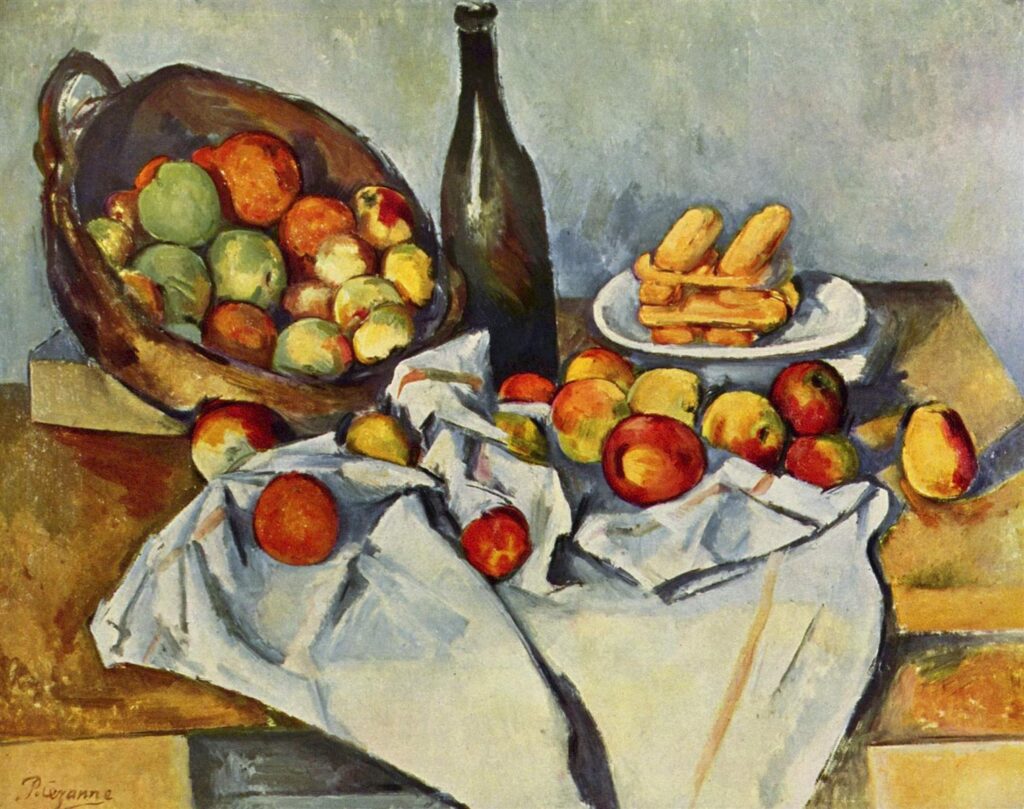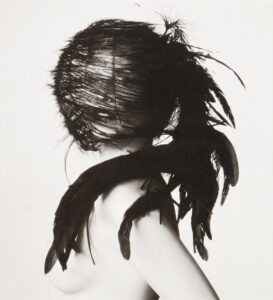
Still Life: The Object as Subject

With a deep history in painting and drawing dating back to the Middle Ages, a still life is a depiction of objects arranged in a particular way by the artist. Artists make photographic still lifes traditionally in a studio setting, using precise composition and lighting to render shape, show texture, establish mood, and draw the viewer’s attention to certain elements. Artists often use natural and man made objects, carefully placing their chosen items in the scene often to serve as symbols or metaphors.
Many photographers also create still life works spontaneously, even capturing found items. The use of such objects can add impact and deeper contextual meaning to what the artist wants to translate to the audience. In this guide, we will look at a small range of examples of still life in the MoCP permanent collection. The guide contains questions for looking and discussion, historical information, and classroom activities and aligns with Illinois Learning Standards.
The museum is generously supported by Columbia College Chicago, the MoCP Advisory Committee, individuals, private and corporate foundations, and government agencies. Special funding for this guide was provided by the Terra Foundation for American Art.

Irving Penn, Composition with Skull and Pear, 1979


Haarlem, Netherlands
Irving Penn (United States, 1917-2009) is best known for his fashion photographs. Yet, he also created elegant and sparse still lifes for clients including Clinique, as well as for his personal interest. Many of Penn’s images, including Composition with Skull and Pear 1979, evoke the exotic as well as the transitory nature of life.
This image connects to an influential tradition in still life painting called “vanitas” that was prominent in Dutch painting of the 17th century. Paintings made in this tradition, including the below image by Peter Caesz, used objects such as the human bones and a melting candle, as seen here, to symbolize the fleeting nature of life and the inevitability of death.
Jan Groover, Untitled #1308, 1983


Jan Groover (United States, 1943-2012) creates complex, spatial arrangements that heighten the beauty of the objects and confuse our visual perception. A painter by training, Groover references art history in her photographs, from Renaissance perspective drawings to post-impressionist painter Paul Cezanne’s (1835-1906) tabletop still lifes.
Groover photographed this composition with a large format camera to capture clear-cut detail. She then printed the image using the platinum palladium process on luminous vellum-like paper to enhance the delicacy and the wide range of tones of the objects.
Questions for Looking and Discussion
1. Take a moment to observe the image and then think about how the objects in the Penn and Groover images interact with one another. Notice how the stem of the flower in Groover’s image lines up with the edge of the cutting board. What else do you notice about how each artist arranged the composition? Which objects are touching or overlapping? How much of the frame is taken up by the objects? What are we able to see or make out in the background?
2. Jan Groover is known for making images with a wide tonal range. Looking at Groover’s image can you point out the darkest areas? Where are the lightest areas? How does this tonal range impact the mood of the photograph?
3. How might the images read differently in color? What do you appreciate about the images in black and white?
4. What might the objects represent as symbols or metaphors?
5. As a viewer, do you consider still life photography in the same way as still life painting? If not, how do your expectations of each medium vary?
Lorna Simpson, 9 Props, 1995


Lorna Simpson (United States, b. 1960) took James Van der Zee’s photographs as her starting point for 9 Props. Van der Zee was an African American photographer who made studio portraits of an emerging Black middle class in Harlem in the early twentieth century, complete with painted backdrops and domestic furnishings that suggest the prosperity of his subjects. Made while she was an artist-in-residence at Pilchuck, a glassblowing school in Seattle, Simpson had artisans recreate the vases that appear in Van der Zee’s pictures. She then photographed the objects and later paired them with texts. Simpson printed the photographs and texts onto felt, a strategy she began using in the mid-1990s, partly as a reaction against her work being pigeonholed in the literalist category of “political art.” By endowing the pictures with tactility and three-dimensionality, Simpson aligns her work with the modernist concern with surface and forms. Keeping the theme uncertain with hazy images and ambiguous text, Simpson’s felt panels are lush objects that use photography to distill and delete, rather than document, touching on issues of class, wealth, and strength of character.
Questions for Looking and Discussion
Lorna Simpson challenges what a portrait can be by depicting vases seen in backgrounds of Van der Zee’s portraits instead of people. How might these objects represent people? Are there any formal qualities you see here that you might also see in a more traditional portrait?
This image features the following text :
Dinner Part with boxer Harry Wills,
1926
James Van Der Zee
Harry Wills aka “The Black Panther,” boxer, businessman- sits with seven other men and women, mostly women with champagne glasses raised as a woman on his left makes a toast in his honor. There are three bottles of champagne, a crystal decanter, a bottle of port, an arrangement of flowers and fruit, and before each guest an untouched china place setting.
Does the text change your understanding of the image? Are you able to imagine the scenes Simpson is describing?
Activity: Write an Ode to Common Things
Still Life encourages us to carefully consider the importance of objects, and the symbolic associations we attach to them. An ode is lyrical verse, often with a set structure, that praises its subject, usually an object. With a tradition going back over a thousand years, odes are Greek in origin and were originally accompanied by music. This lesson was written by former MoCP educator, Corinne Rose, and is inspired by an activity led by arts integration specialist Cynthia Weiss and poet Jenn Morea.
- Closely read Pablo Neruda’s poem Ode to the Onion or Ode to My Socks for the attention they pay and praise they give to everyday objects.
- What do you notice about the words and types of description Neruda uses?
- What do you notice about how he arranges the words and phrases?
Read John Keat’s Ode on a Grecian Urn for its more formal and traditional ode structure, which consists of 10-line stanzas, and iambic verse. Notice how the last words in each line within the stanzas rhyme in a pattern of a-b-a-b c-d-e-c-d-e. Most odes end with a concluding line or epode that breaks from the rhythm established in the stanzas.
Notes to Teachers: Decide on the ode structure you would like your students to use among the wide range of simple or more complex possibilities. The Poetry Foundation’s website is a great source of poems-, like contemporary poet Kevin Young’s humorous Ode to The Midwest.
- How does it make you feel? Why?
- List words that describe the characteristics of your subject through at least two senses. How does it look, feel, smell, sound, taste?
- Try to find fresh words to describe your subject rather than relying on the familiar or cliché.
Select a common object that is important to you. Decide what structure you will use for your ode.
Look at what you have written so far and select the elements that you think are most important. Given the structure you have selected, draft lines of text and arrange them into stanzas.
Edit and revise your ode until you are pleased with the results. Read it aloud and discuss it with your classmates.
Nakeya Brown, If Nostalgia Were Colored Brown series, 2014-2015

In her If Nostalgia Were Colored Brown series, Nakeya Brown (United States, b. 1988) considers the role that hair plays in relation to societal expectations of race and gender. Her still life pictures portray beauty products—such as curlers, domed hair dryers, head wraps, and relaxing creams—alongside vintage album covers and against candy-colored pastel backdrops. The images contemplate the political implications of natural hair while calling into question the dominant white standards of beauty in defining contemporary femininity.
Questions for Looking and Discussion
1. This image was made in 2014. Do the objects appear to belong to that time period? If not, what time period might they belong to?
2. The title Lovin, Livin, Givin’, is a reference to the song in the same album by Diana Ross released in 1978. Does this detail change the way you read the photograph? If so, how?
3. This image belongs to a bigger series title If Nostalgia Were the Color Brown. Discuss the tern “nostalgia.” What is a time or memory in your life you wish you could go back to? What would you see, hear, touch or smell? What object(s) do you own that might bring up memories from the past or make you feel nostalgic?
Activity: Create an Impromptu Still Life Self-Portrait
Inspired by Nakeya Brown, look around your personal space at your personal objects. Consider things such as the objects on your bedside table, the surface of your desk, and even the pictures you post on your wall or refrigerator.
Choose a few objects to create a still life self-portrait, while considering these questions:
Why are these objects or things significant to you?
What do you think others might learn about you from these objects?
Are the objects homemade or unique, or are they something many people own?
What do you notice about the colors of the objects?
Create a composition out of the objects you choose. Before making a photograph, consider how you will frame or compose the image in your camera. Play with vantage point by looking at the scene from above, below, at close range, farther away, from the side, etc. Choose the vantage point that you think works best for this image and make that picture.
Variation: Instead of creating a self-portrait still life, you can also create a portrait of someone else by looking for interesting arrangements of things in their environment.
Illinois Learning Standards Addressed in this Guide:
English Language Arts Standards
CCSS.ELA-LITERACY.CCRA.R.7
Integrate and evaluate content presented in diverse media and formats, including visually and quantitatively, as well as in words.1
CCSS.ELA-LITERACY.CCRA.R.2
Determine central ideas or themes of a text and analyze their development; summarize the key supporting details and ideas.
Through the various interpretation exercises, students will summarize key ideas and themes throughout the photographic examples.
CCSS.ELA-LITERACY.CCRA.SL.2
Integrate and evaluate information presented in diverse media and formats, including visually, quantitatively, and orally.
Fine Arts Standards
Anchor Standard 7: Perceive and analyze artistic work.
VA:Re7.2.8: Compare and contrast contexts and media in which viewers encounter images that influence ideas, emotions, and actions.
VA:Re7.2.I: Analyze how one’s understanding of the world is affected by experiencing visual imagery.
VA:Re7.2.II: Evaluate the effectiveness of an image or images to influence ideas, feelings, and behaviors of specific audiences.
VA:Re7.2.III: Determine the commonalities within a group of artists or visual images attributed to a particular type of art, time frame, or culture.
Anchor Standard 8: Construct meaningful interpretations of artistic work.
VA:Re8.1.8: Collaboratively develop meaningful interpretations, supported by evidence, of artworks through describing and analyzing feelings, subject matter, formal characteristics, artmaking approaches, contextual information, and key concepts.
VA:Re8.1.I: Construct meaningful interpretations, supported by evidence, of an artwork or collection of works through describing and analyzing feelings, subject matter, formal characteristics, art making approaches, contextual information, and key concepts.
VA:Re8.1.III: Compare and contrast differing interpretations of an artwork or collection of works and explain how various interpretations enrich experiences of art and life.
Anchor Standard 11: Relate artistic ideas and works with societal, cultural, and historical context to deepen understanding
VA:Cn11.1.I: Describe how knowledge of culture, traditions, and history may influence personal responses to art.


